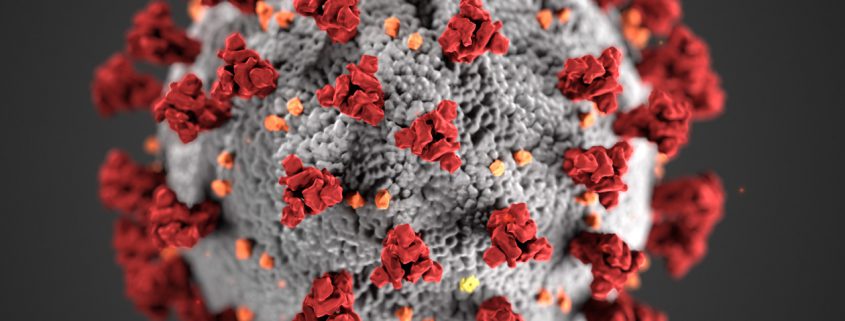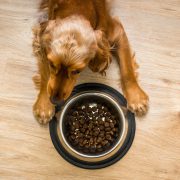COVID-19 and animals
‘In the Spotlight’ features bring together collections of published papers on topics of interest and importance to the veterinary professions.
Papers are chosen for relevance and accessibility, with the full text of articles either being available through the RCVS Knowledge Library, on open access or from other publications to which a significant number of veterinary professionals are likely to have access. This means that there may be relevant evidence that is not included. If you would like assistance in searching for further evidence on this topic you may find the following helpful EBVM Toolkit 2: Finding the best available evidence.
If you would like to suggest a paper for inclusion in one of our published Spotlight features, or a topic for a future Spotlight feature, please email library@rcvsknowledge.org
COVID-19 and animals
Published 20 April 2020
COVID-19 is the official designation of the human disease caused by the novel Coronavirus (SARS-CoV-2, Severe Acute Respiratory Syndrome Corona Virus2) first identified in Wuhan China in December 2019.
Coronaviruses are a large family of RNA viruses that are commonly found in humans as well as other mammals, birds, and reptiles. They all have a characteristic crown (‘corona’) of protein spikes around their lipid envelope. However, the common coronaviruses causing respiratory or gastrointestinal disease in our veterinary patients are alpha coronaviruses, whereas the SARS-CoV-2, is a beta coronavirus, closely related to the viruses that cause SARS and MERS.
Genomic analyses of SARS-CoV-2 indicated that mutations of the receptor binding domain (RBD) of the spike protein present on the surface of the virus optimised the ability to bind to angiotensin-converting enzyme 2 (ACE2) receptors present on the surface of human cells. It has been suggested that SARS-CoV-2 originated either through natural selection in an animal host before zoonotic transfer or as a result of natural selection in humans following zoonotic transfer1.
A recently published paper identified key interactions between spike protein and host receptor ACE2, as the means of both the cross-species and human-to-human transmissions of SARS-CoV (the virus that causes SARS). The authors predict that SARS-CoV-2 also uses ACE2 as its receptor and that the virus could also bind to ACE2 in pigs, ferret, cats and some non-human primates with similar efficiency as it does in people2.
There are three ways that animals could be involved in COVID-19:
- They could be contaminated with live virus and act as fomites
- They could become infected with SARS-CoV-2 and develop signs of infection
- They could become infected and pass on the virus to other animals or humans.
Current evidence indicates that the predominant route of transmission of COVID-19 is from human to human. However, there are now reports of a small number of companion animals becoming contaminated or infected after close contact with infected people. The World Organisation for Animal Health (OIE) reports that studies are underway to better understand the susceptibility of different animal species to the COVID-19 virus and to assess infection dynamics in susceptible animal species, but that there is no evidence to suggest that animals infected by humans are playing a role in the spread of COVID-19. Human outbreaks are driven by person to person contact3.
It should be noted that when reviewing case reports and published papers three different types of tests are referred to:
PCR (Polymerase Chain Reaction): this test detects the presence of viral genetic material (in this case RNA) but cannot distinguish between infection and contamination.
Antibody tests, which can include Enzyme-Linked Immunosorbent Assays (ELISAs) and Virus Neutralization Tests: detect the presence of antibody to the virus. A positive antibody test indicates that the animal has mounted an immune response to the virus, but does not give any information on whether the animal was clinically ill or has shed the virus at any time.
Virus isolation: used to test for the presence of live virus, and a positive test
means that an animal has the potential to shed live virus.
Case reports
Updated 18 March 2024
Experimental studies
Updated 18 March 2024
Epidemiological studies
Updated 18 March 2024
Reviews
Updated 18 March 2024
Impact of the pandemic
Updated 23 January 2024
Bottom line
COVID-19 is a disease of people with the virus being spread through direct (human to human) or indirect (human to surface to human) contact, there have been a small number of cases reported of the virus being isolated from companion animals. To date, all cases of animals being infected can be traced to experimental exposure or contact with an affected human.
Infectious disease experts and multiple international and domestic human and animal health organizations continue to agree there is no evidence at this point to indicate that, under natural conditions, pets spread COVID-19 to people.
However, while there is currently no evidence of pets being implicated in the spread of the disease, it is possible that they could become contaminated if in contact with a COVID-19 infected person, presenting as a potential fomite risk. As such, it is important that when handling pets that are not one’s own that appropriate precautions are taken.
References
- Anderson, Kristian G et al (2020) The proximal origin of SARS-CoV-2 Nature Medicine 26 pp 450-452 https://doi.org/10.1038/s41591-020-0820-9
- Wan, Yushan et al. (2020) Receptor recognition by novel coronavirus from Wuhan: an analysis based on decade-long structural studies of SARS. Journal of Virology 2020 94 (7) e00127-20 https://doi.org/10.1128/JVI.00127-20
- OIE (2020) Questions and Answers on the 2019 Coronavirus Disease (COVID-19) [online] Available at https://www.oie.int/scientific-expertise/specific-information-and-recommendations/questions-and-answers-on-2019novel-coronavirus/. [Accessed 13 April 2020]
Useful links
AVMA COVID-19 Resources and tools
FAO COVID-19 Resources and publications
International Cat Care COVID-19 Advice for cat owners
OIE Questions and answers on the 2019 Coronavirus Disease (COVID-19)
RCVS Knowledge COVID-19 Resources
University of Guelph Centre for Public Health and Zoonoses Worms & Germs Blog COVID-19 Veterinary Resources and documents







Leave a Reply
Want to join the discussion?Feel free to contribute!